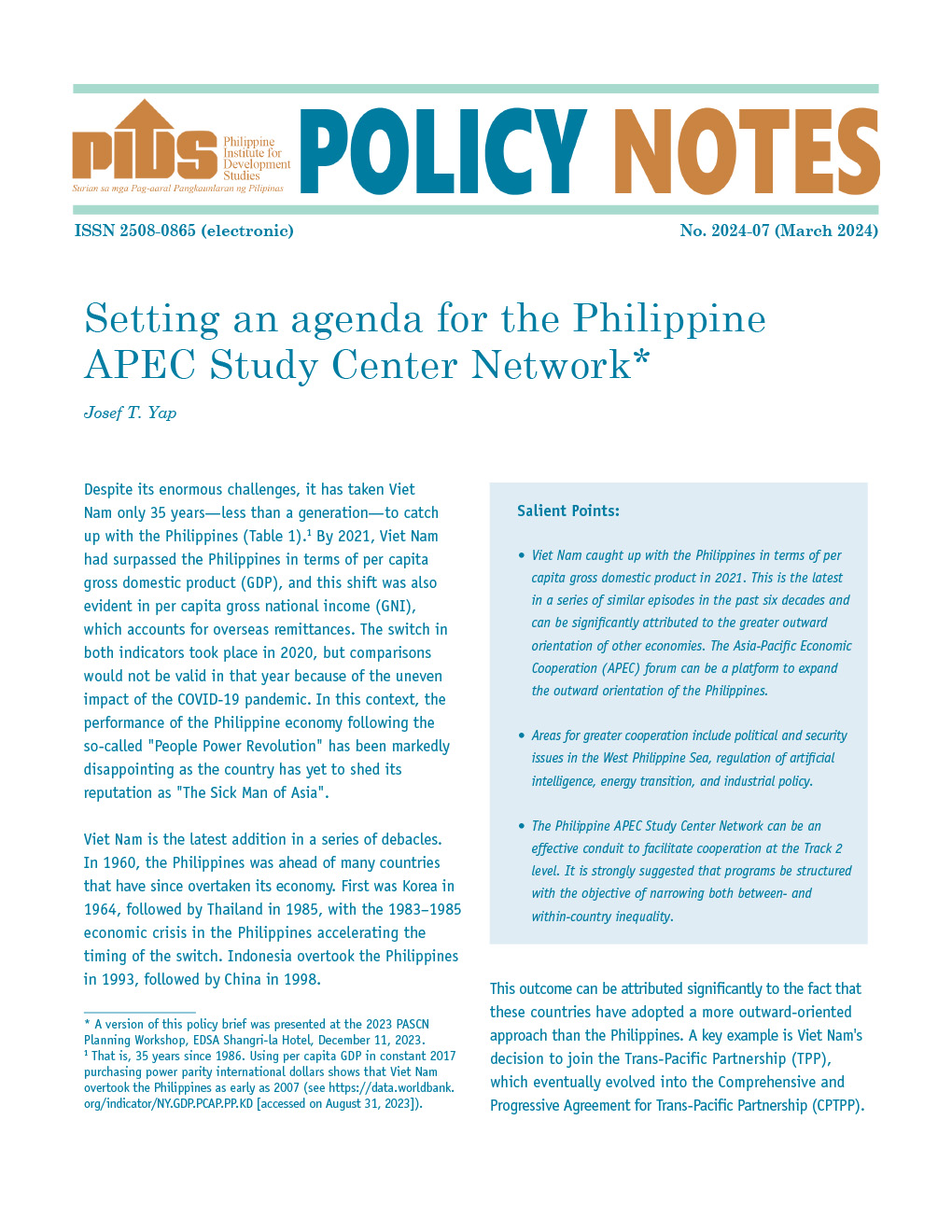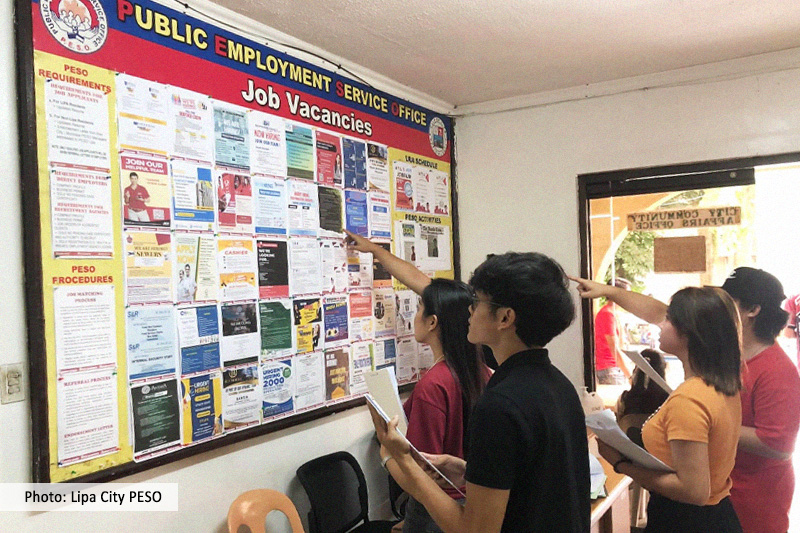Evie Uy, 39, vaguely remembers the moment when her four sons would kiss her on the cheek in the morning before they start off for school. Like a ghost flitting by her children’s doorway at night, she was afraid to touch them lest she rouse them from sleep.
It’s the typical story of a mother prevented by work from enjoying moments with her children. Except that Uy is not an overseas Filipino worker, but one of thousands of commuters perennially stuck in traffic in what has become Metro Manila’s literal version of the kalyeserye (street series).
"It’s so hard,” said Uy of the daily ordeal she shares with other Filipinos working in the supposedly economic bright spot that is Metro Manila. "In the morning, I’m half-asleep, I have this passing memory of my sons saying goodbye. When I get home, they’re fast asleep…,” she said.
"Our relationship has changed. We used to be very close and they had no problem opening up to me,” said Uy, who travels almost three hours a day for six days from her home in Muñoz, Quezon City, to either Makati or Taguig cities, depending on her assignment as marketing representative of David’s Salon.
The mother of four–one in elementary school, two in high school, and one in college–leaves work at 9 p.m. and is lucky to reach home by 10:30 p.m. "My usual clock-in time at home these days is 12 midnight. It’s crazy. My husband, who works from home, takes care of my sons, but our relationship has also suffered. I want to leave work just so I can be with (my family), but our expenses are getting bigger,” Uy said.
Edsa’s super corridor
A study by the Philippine Institute of Development Studies (PIDS), led by supervising research specialist Sonny N. Domingo, indicated that "travel time [by bus] within (Edsa’s) super corridor–a 12-kilometer stretch–ranges from 18 to 138 minutes, depending on the level of traffic congestion at certain times of the day.”
The average bus delay from Ayala to Guadalupe, all of five kilometers, was estimated at 50 minutes, while the 4.3-kilometer-Guadalupe to Aurora Blvd. route took 43 minutes.
That is, unless the usual irritants of heavy rains and the resulting floods get in the way, as it did on Sept. 8 when Uy and thousands of other Metro Manila commuters found themselves stranded on Edsa because of what many described as a "carmageddon.” The scenario was bound to be repeated when the possible mother of all carmageddons–the Christmas shopping rush–gets underway.
The same PIDS study, which covered only the bus transport sector, said the foregone wages–or the opportunity cost of wasted time among passengers on the road–amounted to a staggering P4.56 billion a year. The foregone wages of bus passengers daily along the Ayala-Guadalupe route was placed at P11.28 million, while those using the Guadalupe-Aurora corridor was P8.97 million.
New OFWs
The joke going around the business sector is that Metro Manila’s workers have now become the new OFWs, Sergio Ortiz-Luis, honorary chair of the Employers Confederation of the Philippines (Ecop) told the Inquirer. The reference to the overseas Filipino workers might have a lot to do with the severely constricted time that Metro workers have with their families, but the Ecop official said workers’ productivity have been affected as well by the long hours they spend on the road.
While Ecop cannot quantify the social and economic costs of traffic at this point, Ortiz-Luis admitted that even the bosses pay the price. They have to wake up earlier than usual to get to work on time, and at the very least, set an example. "We can give workers some leeway, like flexi-time, but we still can’t allow frequent tardiness,” he explained.
Diana Madelo, 26, an art director for a travel magazine, has the luxury of driving to work from Fairview to Ortigas but still finds herself stewing in traffic as choke points block her route.
"My work productivity has been affected, my energy drained,” she complained. "My boss has called me out because I’m often late (for work). Telling my boss that traffic is the problem is a lousy excuse.”
She sometimes leaves work at 9 p.m. and arrives home an hour later. But on Sept. 8, when flash floods caused monster traffic, Madelo recalled driving past "people stranded on Edsa (who) couldn’t get a ride home. Vehicles could not pass through.”
She added: "I just wanted to go home that day. I almost lost my sanity, I broke down and was crying while driving. I arrived home after more than three hours.”
Not isolated case
Hers was not an isolated case. Thousands of commuters took to social media lamenting their sorry situation, with some of them spending hours on the road and getting home just before dawn the following day. Others spent the night in cheap hotels, an out-of-pocket expenditure for many.
Madelo said she had no choice and was going to resign soon.
In a separate interview, Dr. Paul Michael R. Hernandez cited the impact of heavy traffic on the health of workers.
"Philippine traffic exposes employees to a number of hazards, but some of these hazards are specific to certain workers,” said the assistant professor at the Department of Environment and Occupational Health of the University of the Philippines in Manila.
Those using open vehicles are exposed to air pollutants, including carbon dioxide and carbon monoxide, that cause respiratory problems such as bronchitis and other lung ailments, he said.
Prolonged sitting can also cause "nerve impingement especially that of the sciatic nerve, leading to discomfort or even pain in either or both legs. There can also be strain on the backbone. Commuters (on crowded buses) who stand for prolonged hours might experience muscle pains in their legs,” Hernandez said.
Stress hormones
Truck drivers are exposed to whole body vibration (WBV), or the effect of vibration on the body from the vehicle’s engine underneath their seats, he said. "WBV can cause back problems, urinary concerns and even infertility, according to some studies.”
Traffic can also elevate stress hormones. "These may manifest as increased heart rate and blood pressure, and sometimes, tension headaches,” Hernandez said.
Suggestions have been put forward to minimize the impact of traffic, including a four-day workweek, but employers, among them Ortiz-Luis, balk at the idea. "Companies have to time their operations (to coincide) with that of the government and other stakeholders,” he said.
Rickety public transport
While Ecop considers decaying urban structures and subsequent maintenance work as adding to the traffic problem, the government has trumpeted the massive developments across the metropolis as part of a booming economy and rising employment.
But analysts think otherwise and said that traffic has doused the economy’s gains, and exposed an unsafe, rickety public transport system.
According to a Japan International Cooperation Agency study, Manila has been losing P2.4 billion a day in terms of potential income because of traffic jams. This could balloon to P6 billion a day by 2030 if the government fails to put interventions in place, the study added.
"My own assessment is that infrastructure projects, real estate construction, and consumption growth (e.g., more vehicles, leisure trips, etc.)–may be representative of economic growth, but the resulting traffic congestion is a sign of mismanagement and lack of advance planning,” PIDS senior research fellow Adora Navarro said in an e-mail correspondence.
She urged the Metropolitan Manila Development Authority and local government units in Metro Manila to assess the Metro’s drainage system and require private firms to conduct a flood impact analysis of their construction-related activities.
"Every time I pass by a major road construction project or a new condominium on the rise, I fear that the flood impact analysis of the construction activities is not being given serious attention,” she said.
With the Philippine National Police-Highway Patrol Group (HPG) taking over traffic management in Edsa, Ortiz-Luis said one of the many factors colluding to create major bottlenecks at Edsa had been taken off the list. "Law enforcement is doing a good job, which leaves us with public works and engineering,” he said, noting that road networks around Edsa are covered in potholes and months-old road construction projects. "It seems there is no urgency on the public works front,” said the Ecop official.
Aside from the perennial problem besetting the Metro Rail Transit and Light Rail Transit systems, there are also too many vehicles–about 80 percent of them private–plying the streets of the Metro.
Oversupply of buses
"Studies and common sense tell us that allowing too many private and half-empty public utility vehicles to service the needs of commuters (are) both costly and inefficient,” Domingo said. A study by Domingo’s team also indicated that there was a 50-percent oversupply of buses on Edsa’s super corridor.
Exhaustive discourse on how to resolve the Metro’s traffic woes has come from various groups, but Domingo quoted transport experts as saying that "what we need is to develop a good public transport system, enforce discipline on our roads, and decentralize economic activities in regions outside the National Capital Region.”
As for affected workers like Uy and Madelo, moving to areas nearer their place of work might sound like a good alternative, but there are other factors to consider, they said. Uy, for one, said her present home was near her children’s schools.
Condo developers might have gained from the situation by offering residences at convenient locations, but Ortiz-Luis said this was "at the expense of others, winning from the misery of others.”
We know the alternative courses of action to address the traffic problem, Domingo said. "Though admittedly not easy, it’s really time for us to seriously commit to a lasting solution to the issue,” she added.//
Related Posts
Publications
Press Releases
Video Highlights
[No related items]
Infographics
[No related items]






